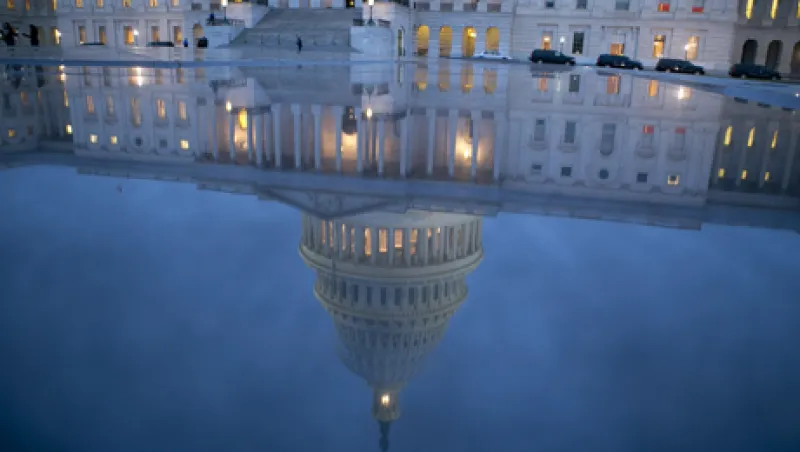Many restaurants’ kids’ menus have a space dedicated to games like tic-tac-toe, and it recently dawned on me to ask myself how many times I’ve played the game in my adult life.
I figured I have played approximately 16,000 games of tic-tac-toe as a parent, which outside of socially awkward circles has to be some sort of modern-day record.
Eventually my kids and I will grow tired of the game and move on when both sides have fallen into the rhythm of a series of turns that end in stalemate, with no space left for either player to win. In fact, the last few games in a series have a near-choreography to them — we almost don’t look down at the grid anymore as we play toward a draw, moving in perfect cadence.

|
| Steve Rodosky is a portfolio manager covering Treasuries. |
This dynamic feeds uncertainty into the economy and, in turn, leads to lower levels of investment, hiring and other activity: Credit does not flow through the system properly, businesses hold back on their expansion plans and job gains are muted — a malaise hangs over the whole country.
With the body politic in a state of paralysis, the private market would rather wait for clarity before taking risks in the real economy, preferring to operate in the confines of financial market opportunities engineered by the Federal Reserve’s activist policy.
Critical political dates loom this spring with regard to the functioning of the U.S. government. So-called sequestration is scheduled to go into effect on March 1, and a partial government shutdown is threatened for later that month. With the tic-tac-toe parallel in mind, consider this: The Republican Party wants to force the sequester and possibly shut the government down in order to get what it wants in budget negotiations. Democrats think that ultimately they would stand to gain from such maneuvering, believing the court of public opinion would rage against the Republicans for a shutdown. With that piece of game theory laid before you, what odds should we put on a productive outcome after this budget season?
Meanwhile, our economy slogs through its deleveraging process at growth rates held back by the uncertainty Washington creates.
At the dinner table we can always leave tic-tac-toe and move on to the word search or connect the dots. Congress needs to find some new way to move on and engage to get past the stalemate mentality. Common sense suggests a broad objective: near-term stimulus with long-term sustainability.
The next step should be to quantify those objectives. An annual budget would be a start in defining the near-term stimulus. Setting real goals for entitlement reform would help on the sustainability front.
It could well be that small agreements are reached along the way, especially where there is little distance between the parties. They’ve proven unable to agree on a so-called grand bargain — why not reduce uncertainty in areas of general agreement? Incremental clarity could well be a self-reinforcing tailwind to economic growth as we tackle the critical fiscal issues facing generations to come.
Meanwhile, as investors wait for the bottleneck to free up, tactical caution regarding risk is warranted, particularly as it is likely that growth in gross domestic product will disappoint relative to expectations. Yield-curve positioning favors so-called steepener trades too – that is, positions that benefit from longer interest rate maturities rising more than shorter ones over time.
A simple justification for these portfolio strategies can be found in considering two extreme possible outcomes: The U.S. fails to gets its act together, and a credit risk premium must be embedded into our yield curve; or Washington does pull it together, and we shift to an inflationary environment — which would also lead to steeper yield curves. The latter is certainly the more benign outcome of the two.
Unfortunately, both sides seem content playing tic-tac-toe, ending round after round with nothing to show for the time spent. Unlike the dinner table, however, the consequence is not mere boredom but rather inadequate economic and job growth.
This article contains the current opinions of the author but not necessarily those of Pimco. Such opinions are subject to change without notice. This article has been distributed for educational purposes only and should not be considered as investment advice or a recommendation of any particular security, strategy or investment product. Information contained herein has been obtained from sources believed to be reliable, but not guaranteed. No part of this article may be reproduced in any form, or referred to in any other publication, without express written permission.






